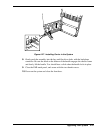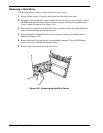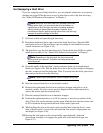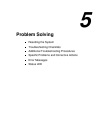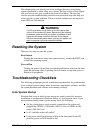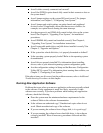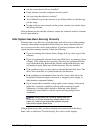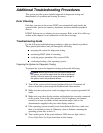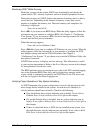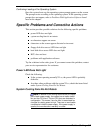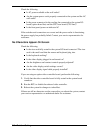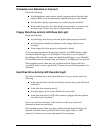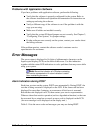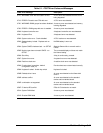
5-4 Problem Solving
Are the correct device drivers installed?
Is the software correctly configured for the system?
Are you using the software correctly?
Try a different copy of the software to see if the problem is with the copy
you are using.
If other software runs correctly on the system, contact your vendor about
the failing software.
If the problems persist with the software, contact the software vendor's customer
service representative.
After System Has Been Running Correctly
Problems that occur after the system hardware and software have been running
correctly often indicate equipment failure. However, many situations that are
easy to correct can also cause such problems. If you have problems after the
system has been running correctly, check the following.
If you are running the software from a floppy disk, try a new copy of the
software.
If you are running the software from a hard disk drive, try running it from
a floppy. If the software runs correctly, there may be a problem with the
copy on the hard disk. Reinstall the software on the hard disk drive and
try running it again. Make sure all the necessary files are installed.
If the problem recurs, you may need to reformat the hard disk drive. The
drive, drive controller, or system boards may be defective.
If the problems are intermittent, there may be a loose cable, dirt in the
keyboard (if keyboard input is incorrect), a marginal power supply, or
other random component failures.
If you suspect that a transient voltage spike, power outage, or brownout
might have occurred, reload the software and try running it again.
Symptoms of voltage spikes include a flickering video display,
unexpected system reboots, and the system not responding to user
commands.
Note:
Voltage spikes can corrupt or destroy data files
on the drive. If you are experiencing voltage spikes on the
power line, install a surge suppresser between the power
outlet and the system power cords.
If the problem recurs after you have checked and corrected all of the above
items, refer to Additional Troubleshooting Procedures in this chapter.



